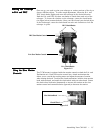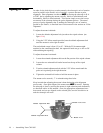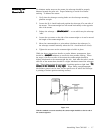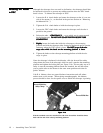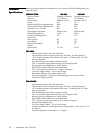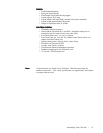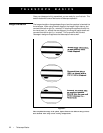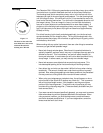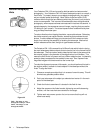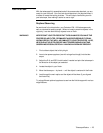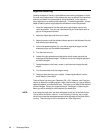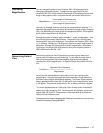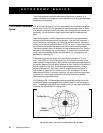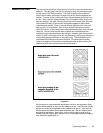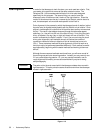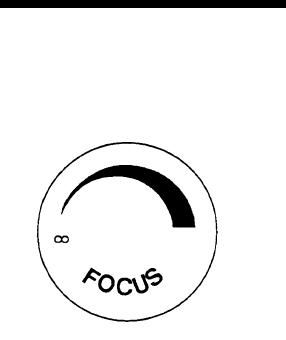
Telescope Basics • 23
The Celestron CM-1100 focusing mechanism controls the primary mirror which
is mounted on a ring which slides back and forth on the primary baffle tube.
The focusing knob, which moves the primary mirror, is on the rear cell of the
telescope just right of the star diagonal and eyepiece. Turn the focusing knob
until the image is sharp. If the knob will not turn, it has reached the end of its
travel on the focusing mechanism. Turn the knob in the opposite direction until
the image is sharp. Once an image is in focus, turn the knob clockwise to
focus on a closer object and counterclockwise for a more distant object. A
single turn of the focusing knob moves the primary mirror only slightly. There-
fore, it will take many turns (about 40) to go from close focus (approximately
65 feet) to infinity.
For critical focusing, both visually and photographically, turn the focus knob
counterclockwise until the image is sharp. Turning the focusing knob in this
direction pushes the primary mirror forward, or against the pull of gravity, which
minimizes any mirror shift.
When working with any optical instrument, there are a few things to remember
to ensure you get the best possible image.
• Never look through window glass. Glass found in household windows is
optically imperfect, and as a result, may vary in thickness from one part of a
window to the next. This inconsistency can and will affect the ability to
focus your telescope. In most cases you will not be able to achieve a truly
sharp image. In some cases, you may actually see a double image.
• Never look across or over objects that are producing heat waves. This
includes asphalt parking lots on hot summer days or building rooftops.
• Hazy skies, fog, and mist can also make it difficult to focus when viewing
terrestrially. The amount of detail seen under these conditions is greatly
reduced. Also, when photographing under these conditions, the processed
film may come out a little grainier than normal with lower contrast.
• When using your telescope as a telephoto lens, the split screen or micro-
prism focuser of the 35mm SLR camera may “black out.” This is common
with all long focal length lenses. If this happens, use the ground glass
portion of your focusing screen. To achieve a very sharp focus you may
consider using a focusing magnifier. (These are readily available from your
local camera store.)
• If you wear corrective lenses (specifically glasses), you may want to remove
them when observing with an eyepiece attached to the telescope. When
using a camera, however, you should always wear corrective lenses to
ensure the sharpest possible focus. If you have astigmatism, corrective
lenses must be worn at all times.
Focusing
Figure 3-2
The decal on the end of the
focus knob shows the correct
rotational direction for
focusing the CM-1100.



